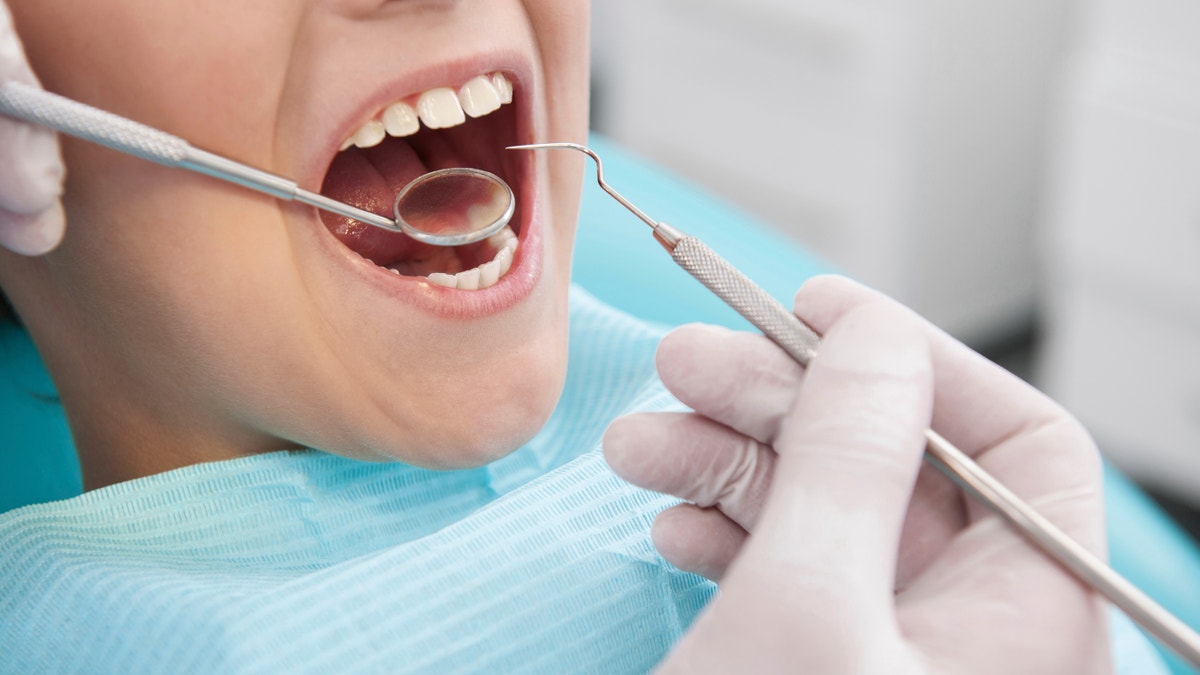
Little boy sitting at the chair at the dental office while doctor examining teeth (iStock)
The Centers for Disease Control and Prevention (CDC) urged U.S. schools Tuesday to bring in dental specialists to apply sealants on kids’ molars to help reduce cavities.
Research suggests dental sealants, which are quick and easy to apply, could prevent up to 80 percent of cavities among children, yet a CDC Vital Signs report suggested about 60 percent of kids ages 6 to 11 do not get them, according to a news release. The CDC encouraged schools to implement more school-based sealant programs (SBSPs) to target low-income school-age kids especially, as these children may not have access to regular preventive care.
“Many children with untreated cavities will have difficulty eating, speaking and learning,” CDC director Dr. Tom Frieden said in the release. “Dental sealants can be an effective and inexpensive way to prevent cavities, yet only one in three low-income children currently receive them. School-based sealant programs are an effective way to get sealants to children.”
The Vital Signs report found that while 43 percent of school-age kids ages 6 to 11 had a dental sealant, low-income children were 20 percent less likely to have sealants than higher-income children.
Other studies have suggested dental sealants prevent 80 percent of cavities two years after application and prevent 50 percent of cavities for up to four years after placement, according to the release. Dental sealants can remain in the mouth for up to nine years before they need to be reapplied.
Kids without sealants have nearly three times as many cavities as children with them, the Vital Signs report suggested.
By targeting schools with a high percentage of children eligible for free or reduced-cost meal programs with SBSPs, officials can help improve low-income students’ dental care, according to the CDC. In the release, the CDC urged officials to target schools in need in their state, track the number of schools and children participating in SBSPs, implement policies that deliver the programs with cost effectiveness, and help connect schools with health departments and specialists in the community. The CDC currently provides funding to 21 state public health departments to implement SBSPs for low-income students who live in rural parts of the United States.
